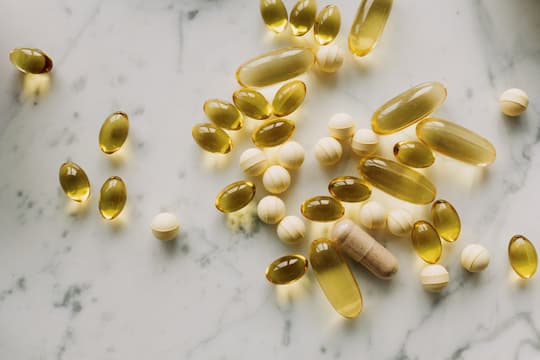The optimal daily dose of omega-3 fatty acids to lower blood pressure.
Consuming 3 grams of omega-3 fatty acids per day as a dietary supplement or from foods has been found to be the optimal level to reduce high blood pressure.
Eicosapentaenoic acid (EPA) and docosahexaenoic acid (DHA) are types of omega-3 fat mainly found in oily fish such as trout, salmon, herring, mackerel, and sardines.
Also, some fish oil supplements including cod liver oil contain good levels of EPA and DHA.
Much research suggests that omega-3 fatty acids found in fish oil may help lower blood pressure.
The American Heart Association (AHA) recommends eating fish — particularly fatty fish such as salmon, mackerel, tuna, and sardines — at least twice a week.
Other omega-3-rich foods to include in your diet are:
- flaxseed,
- walnuts,
- canola oil,
- and soybeans.
How much omega-3?
Several studies have suggested that daily consumption of omega-3 fatty acids could lower hypertension but the amount that a person should take to see the effect is unknown.
According to the National Institutes of Health (NIH), a daily intake of 1.1 to 1.6 grams of omega-3 fatty acids will be adequate for a healthy adult.
This study found that the optimal dosage of omega-3 fatty acids to lower blood pressure is about 3 grams a day.
Dr Xinzhi Li, the study’s co-author, said:
“According to our research, the average adult may have a modest blood pressure reduction from consuming about 3 grams a day of these fatty acids.”
The findings are from an analysis of 71 clinical trials that looked at the effect of DHA and EPA on blood pressure and cholesterol levels in adults between 1987 and 2020.
Here is a summary of their findings:
- A daily intake of 2 to 3 grams EPA and DHA omega-3 fatty acids from foods or supplements or both led to a reduction of 2 mm Hg in systolic and diastolic blood pressure.
- Doses of omega‐3 fatty acid intake above 3 grams a day may provide even more blood pressure and cholesterol lowering benefits for those at greater risk of heart disease.
- Participants with hypertension who consumed at least 3 grams a day of omega-3 fatty acids saw a reduction of 4.5 mm Hg in their systolic blood pressure.
- Higher dosages than 3 grams a day of omega-3 fatty acids didn’t show further benefits for those with normal blood pressure.
A 5 ounce (140g) serving of Atlantic salmon or 3 ounces (90g) of mackerel will provide 3 grams of omega-3 fatty acids.
Dr Li said:
“Most of the studies reported on fish oil supplements rather than on EPA and DHA omega-3’s consumed in food, which suggests supplements may be an alternative for those who cannot eat fatty fish such as salmon regularly.
Algae supplements with EPA and DHA fatty acids are also an option for people who do not consume fish or other animal products.”
Dr Li addd:
“Our study supports the FDA guidance that EPA and DHA omega-3 fatty acids may reduce the risk of coronary heart disease by lowering high blood pressure, especially among people already diagnosed with hypertension.”
Caution
Note that more research is needed to understand the full effects of omega-3 on blood pressure, and supplementation is not a substitute for other blood pressure-lowering treatments prescribed by your doctor.
The study was published in the Journal of the American Heart Association (Zhang et al., 2022).

